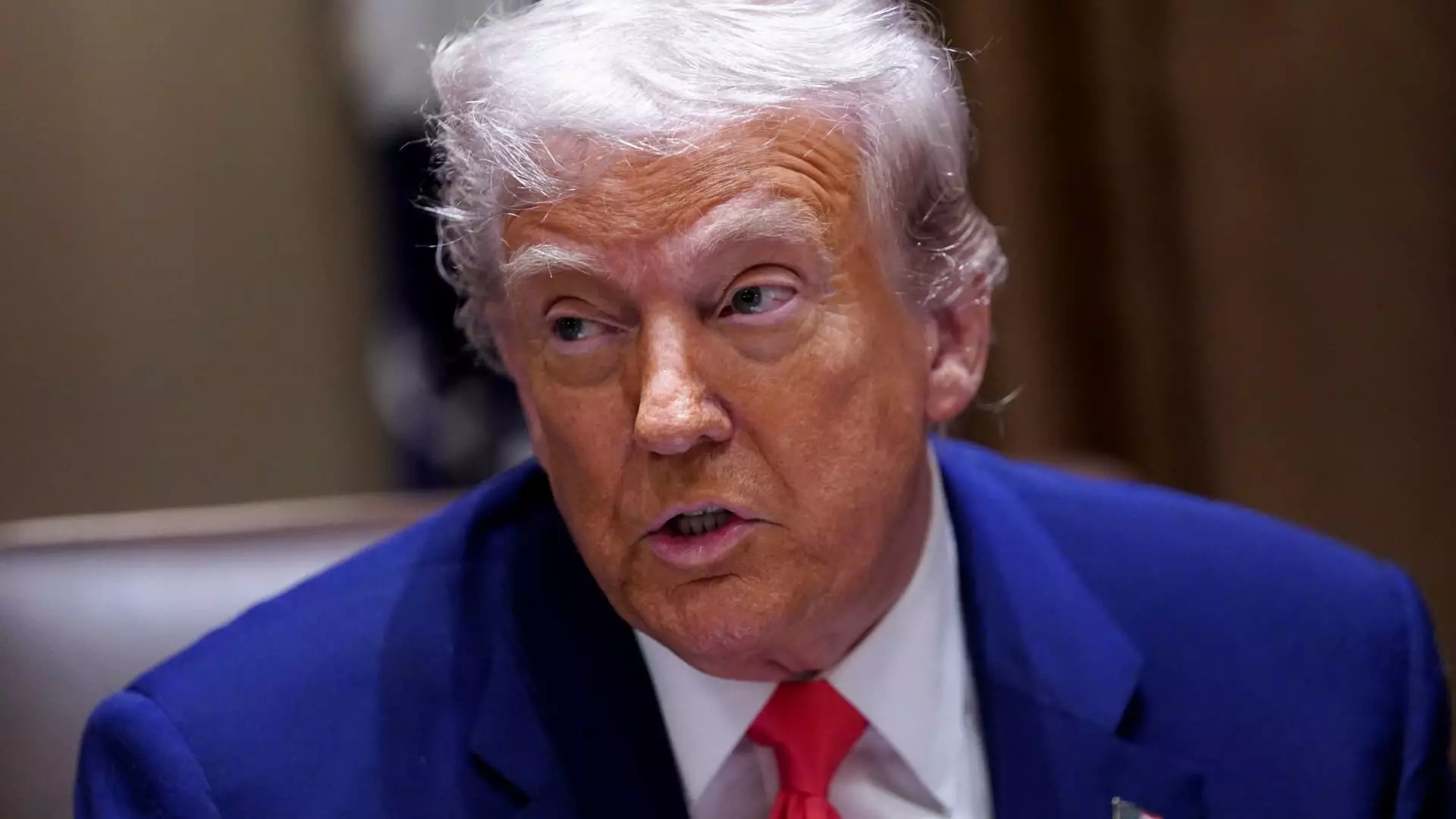The recent intensification of tariffs on imports from China, now soaring to a staggering 145%, is poised to transform the U.S.-China trade relationship into something akin to a battleground rather than a bridge. As economist Erica York suggests, tariffs at this magnitude threaten to choke off trade entirely. When tariffs reach triple-digit levels, it psychologically alters market dynamics, and businesses are left scrambling to absorb or pass on costs that become untenable. This isn’t just a temporary hiccup; this is part of a broader and alarmingly protectionist shift that the Trump administration appears ready to embrace.
The Market’s Disheartened Reaction
Markets responded negatively to this escalation, with investors jittery over the stark economic implications. The gains seen in previous days vanished almost instantly as the reality set in: a trade war is not a game, and the stakes are existential for entire industries. The announcement of a short-lived reduction of tariffs for other nations underscores a glaring contradiction; while Trump appears to offer respite to some, he seems dead set on punishing China. This inconsistency sends mixed signals to the market, and uncertainty breeds more uncertainty.
Historical Context and Consequences
Trump’s approach marks a significant regression into protectionism, reminiscent of policies not seen since the closing years of World War II. This strategy comes with severe costs—both that of higher consumer prices and decreased competitiveness in global markets. York rightly points out that we are looking at a significant increase in average tariffs, which carry economic repercussions that could ripple through the entire economy. Instead of fostering growth and innovation, protectionist tariffs often lead to stagnation and increased encumbrances for consumers.
Tax Implications and Economic Backlash
It’s also essential to consider the ramifications of this policy beyond just trade. The Tax Foundation estimates the potential federal tax revenue increases due to these tariffs at $171.6 billion this year. This could lead to the largest individual tax increase since 1993 and may overshadow past tax adjustments under both George H.W. Bush and Barack Obama. But it begs the critical question: at what cost? If consumers are the ones suffering under the weight of these protective measures, is it truly worth the revenue bump? The answer leans heavily toward ‘no,’ as we recognize that damaging middle-class pockets for governmental gain is fundamentally flawed.
The Chinese Response: Resilience or Calculation?
China’s recent retaliatory tariffs illustrate a critical inflection point in this trade saga. These tit-for-tat measures, raising levies on U.S. imports to 84%, signal that China will not capitulate silently. Instead, they’re preparing for a protracted struggle, which serves to heighten economic tensions and risks further amplifying a downward spiral for both economies. A precarious dance of escalating tariffs suggests we may soon find ourselves trapped in a war of attrition, where disappointment and regret may ultimately be the only outcomes.
The path we are heading down, exacerbated by reckless tariff hikes, endangers the prospects of free trade and on a broader level, mutual economic prosperity. While some may tout these measures as necessary for national security or economic independence, the underlying reality is far from comforting. Long gone are the days of strategic international partnerships, as we become embroiled in a costly economic confrontation that could define the decade.


Leave a Reply